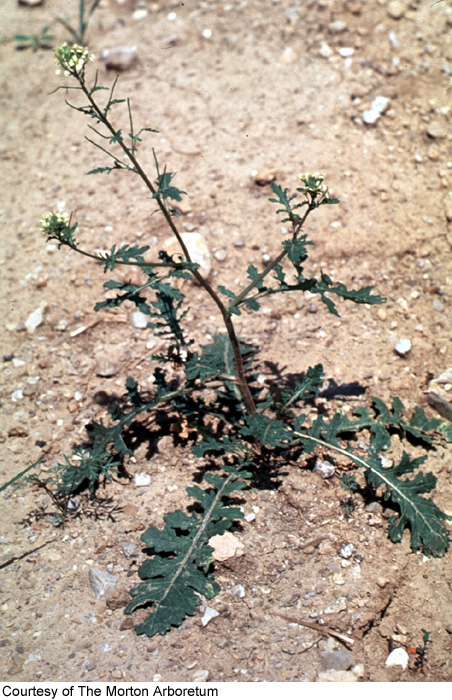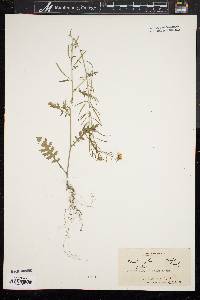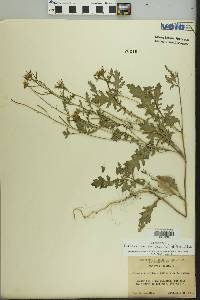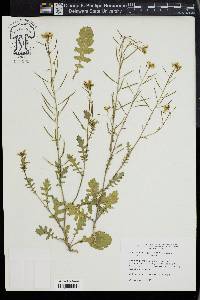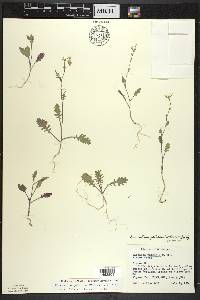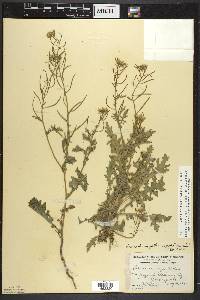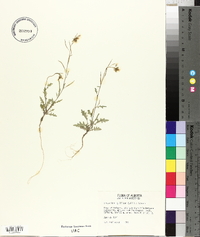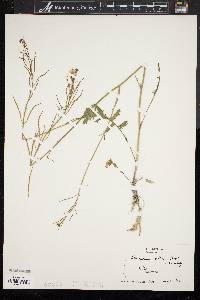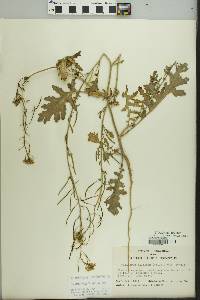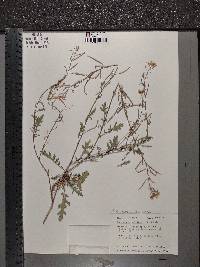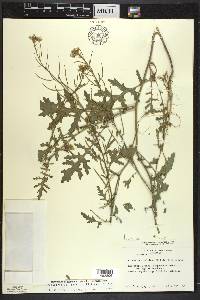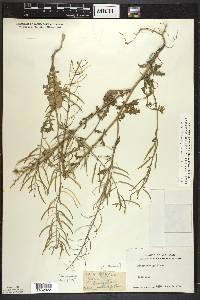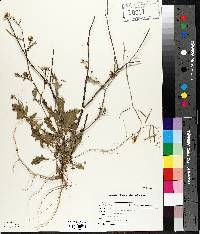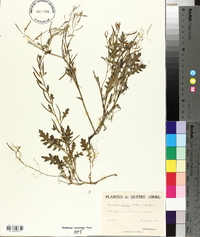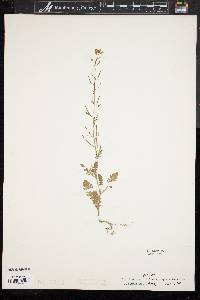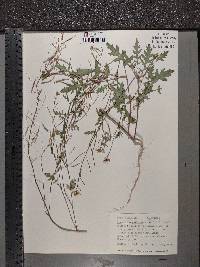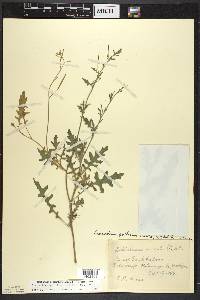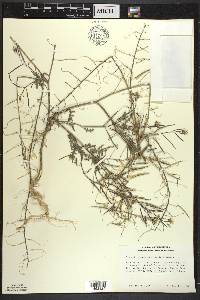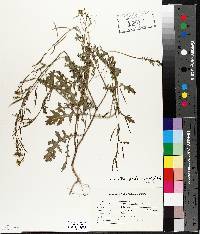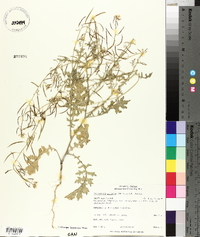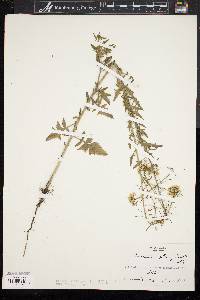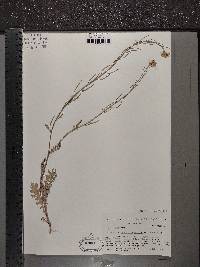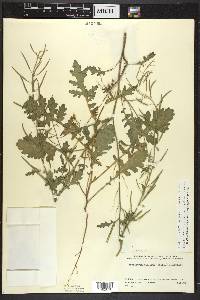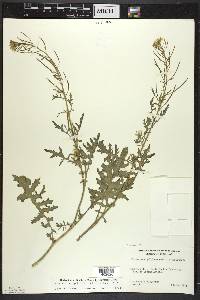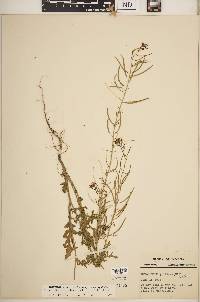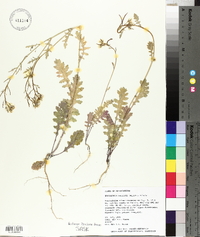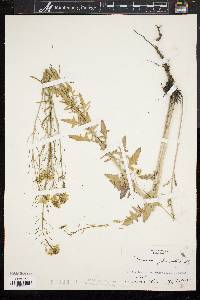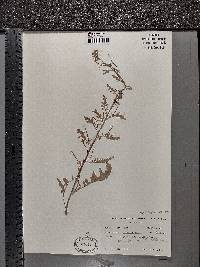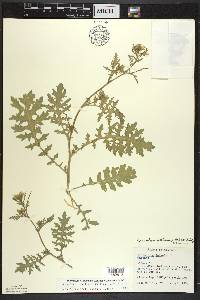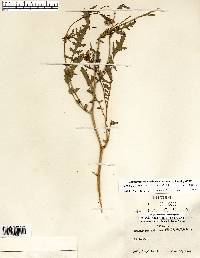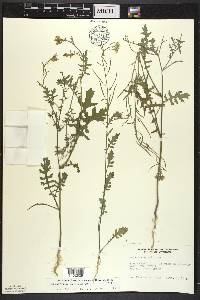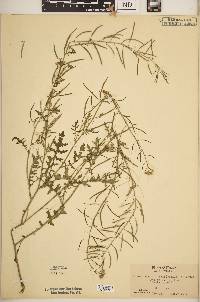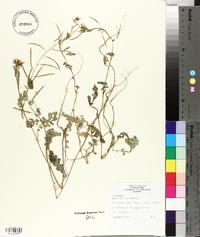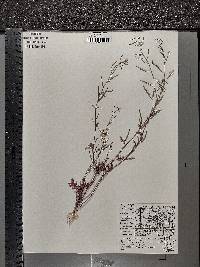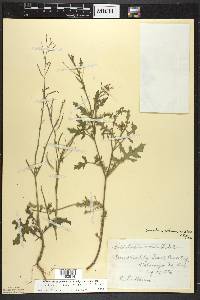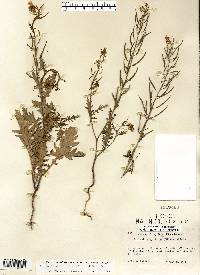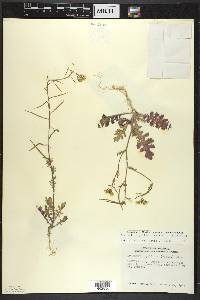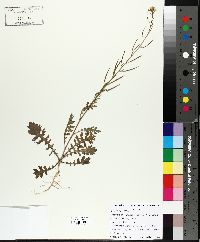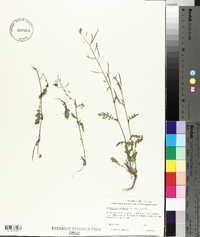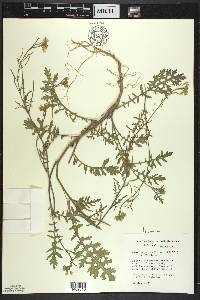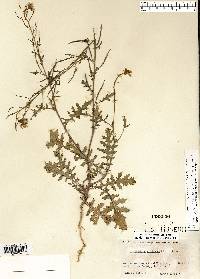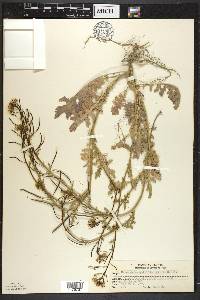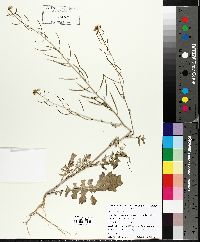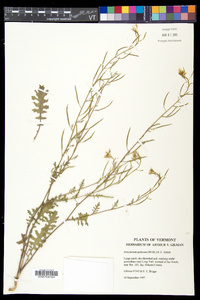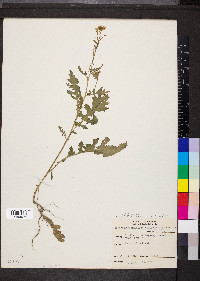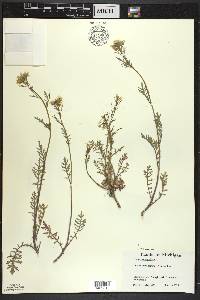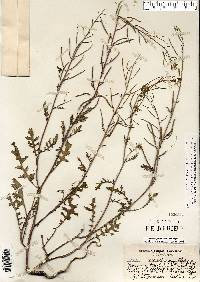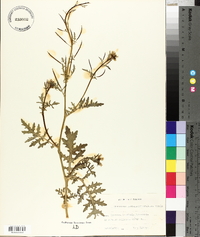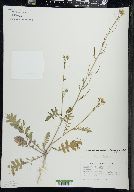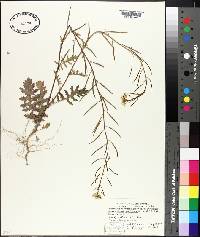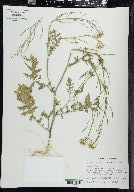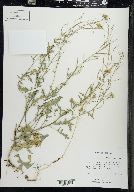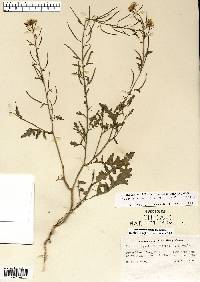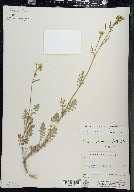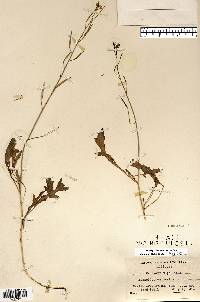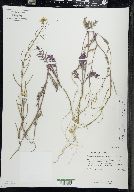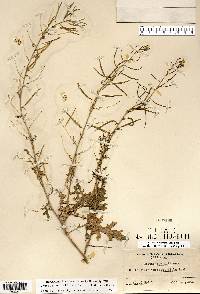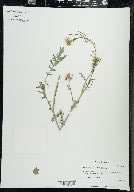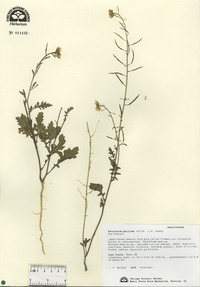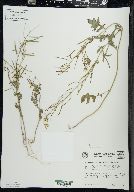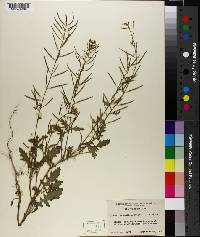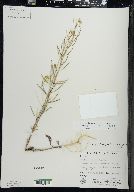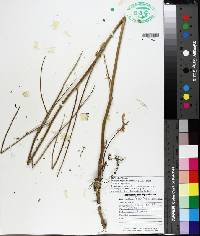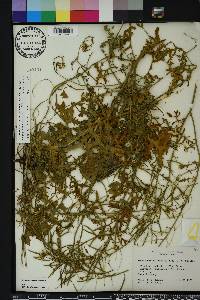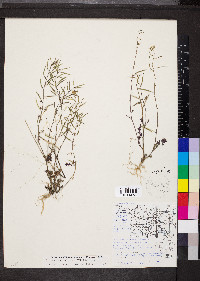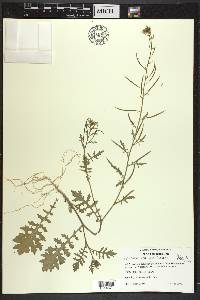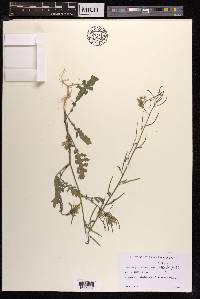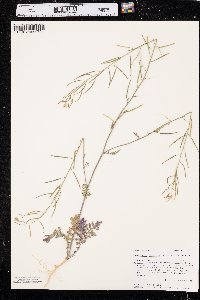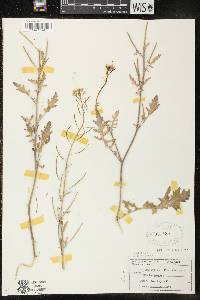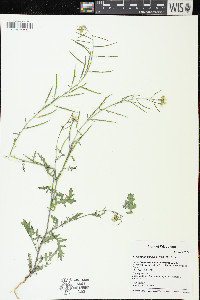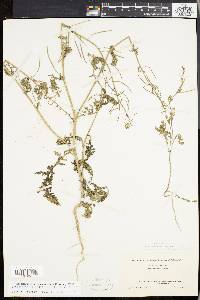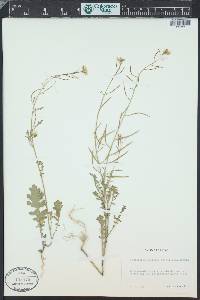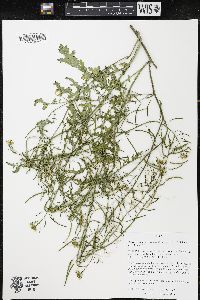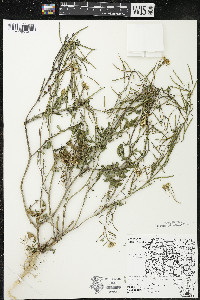Erucastrum gallicum
|
|
|
|
Family: Brassicaceae
Common Dog-Mustard
[Erucastrum pollichii K.F.Schimp. & Spenn., moreSisymbrium gallicum Willd.] |
Plants sparsely to densely pubescent, trichomes stiff, recurved (or retrorsely appressed). Stems erect or ascending, unbranched or branched (few to several), 0.9-6.5(-8) dm. Basal leaves: blade oblanceolate, 3-28 cm × 8-110 mm, margins dentate to deeply lobed or pinnatifid, lobes 3-10 each side, smaller than terminal, lobe margins crenate or dentate, surfaces sparsely pubescent. Cauline leaves similar to basal, distal shortly petiolate or sessile, blade smaller (distalmost 1-2 cm, passing into bracts, leaflike, linear, margins entire). Fruiting pedicels (3-)5-10(-20) mm. Flowers: sepals 3-5 × 1-2 mm, sparsely hispid apically; petals white to pale yellow, 4-8 × 1.5-3 mm; filaments 3.5-5.5 mm. Fruits slightly torulose, 1-4.5 cm × 1-2(-2.7) mm; terminal segment 1.5-4 mm; style 1-3 mm. Seeds reddish brown, 1.1-1.5 × 0.7-0.8 mm, alveolate. 2n = 30. Flowering Mar-Sep(-Dec in south, fruiting shortly after). Roadsides, waste places, disturbed sites, along railroads, fields, gardens, orchards, beaches of Great Lakes; 0-2000 m; introduced; St. Pierre and Miquelon; Alta., B.C., Man., N.B., Nfld. and Labr., N.W.T., N.S., Ont., P.E.I., Que., Sask.; Ala., Calif., Conn., Fla., Idaho, Ill., Ind., Iowa, Kans., Ky., Maine, Md., Mass., Mich., Minn., Mo., Mont., N.H., N.Y., N.Dak., Ohio, Oreg., Pa., S.Dak., Tex., Vt., Wash., W.Va., Wis., Wyo.; Europe. A European native, Erucastrum gallicum was first recorded for North America from Massachusetts and Wisconsin (see J. O. Luken et al. 1993 for history of introduction and spread). It is naturalized in all the provinces of Canada and in parts of the United States, particularly the Midwest. It is an allopolyploid, with the n = 7 component from Diplotaxis erucoides/ D. cossoniana and n = 8 from the E. nasturtiifolium complex (S. I. Warwick and L. D. Black 1993). I have not seen specimens from Maryland.
Annual or biennial herb 30 cm - 0.6 m tall Stem: upright, with unbranched hairs. Flowers: in a dense, branched cluster (raceme). The racemes have bracts below. Stalks slender, ascending, 6 - 10 mm long. Sepals four, upright. Petals four, pale yellow or whitish, 4 - 8 mm long, tips rounded, bases narrowing. Stamens six. Fruit: a long, narrow pod, ascending and often upcurved, 2 - 4 cm long, four-angled, with a 3 mm long beak. Seeds in one row in each chamber. Stem leaves: alternate, not clasping, reducing in size upwards, sparsely hairy. Lower leaves: deeply pinnately divided, to 15 cm long, reverse lance-shaped, toothed, sparsely hairy. The upper leaflet is the longest. Similar species: No information at this time. Flowering: late April to late October Habitat and ecology: Introduced from Europe. An increasingly common weed of railroad ballast and waste ground. Occurence in the Chicago region: non-native Etymology: Erucastrum means "resembling Eruca." Eruca is a genus in Brassicaceae. Gallicum means "of or from France." Author: The Morton Arboretum Annual or biennial 3-6 dm, resembling Brassica; basal and lower lvs oblanceolate, to 15 cm, sparsely hairy, deeply pinnatifid, the segments crenately or angularly dentate, the terminal one much the largest; cauline lvs progressively reduced; racemes bracteate below; pedicels slender, ascending, 6-10 mm; sep erect; pet 4-8 mm, pale yellow or whitish; fr usually upcurved, the body 2-4 cm, the beak 3 mm; 2n=30. Waste places; a European weed, now widespread in the U.S. and s. Can. May-Sept. Gleason, Henry A. & Cronquist, Arthur J. 1991. Manual of vascular plants of northeastern United States and adjacent Canada. lxxv + 910 pp. ©The New York Botanical Garden. All rights reserved. Used by permission. From Flora of Indiana (1940) by Charles C. Deam Indiana Coefficient of Conservatism: C = null, non-native Wetland Indicator Status: N/A |
|
|
|

